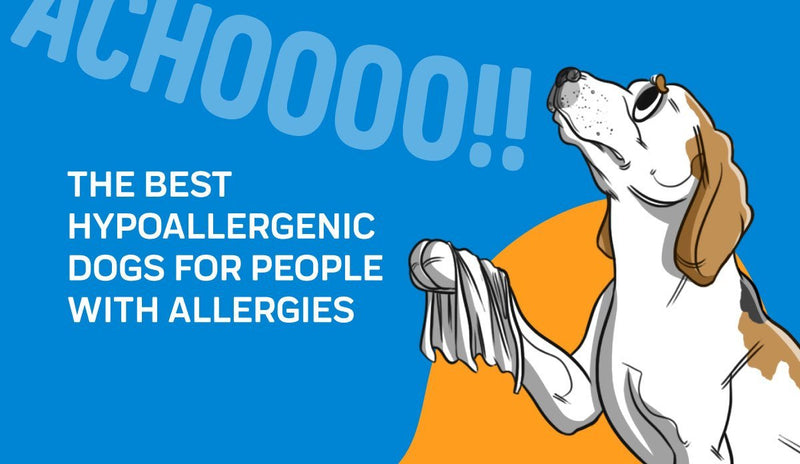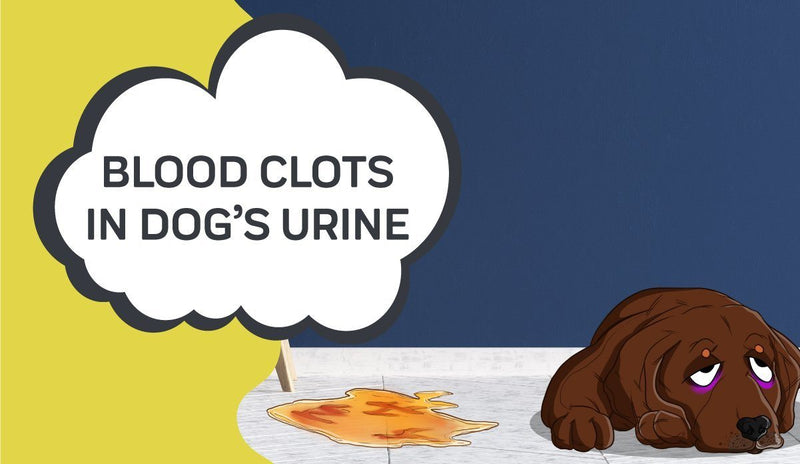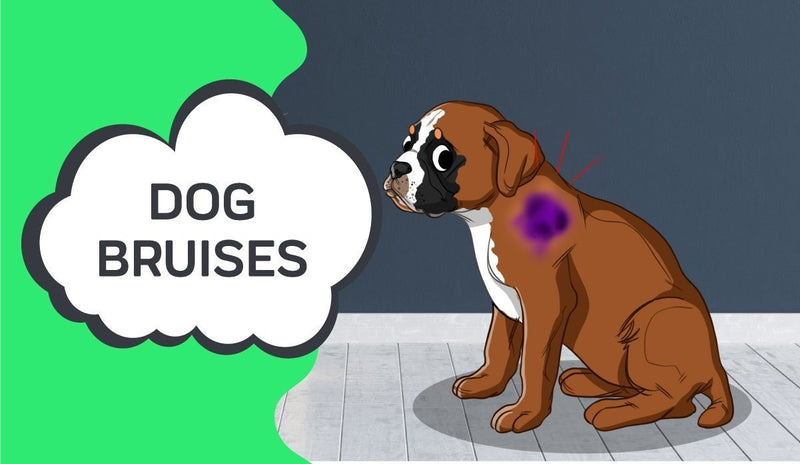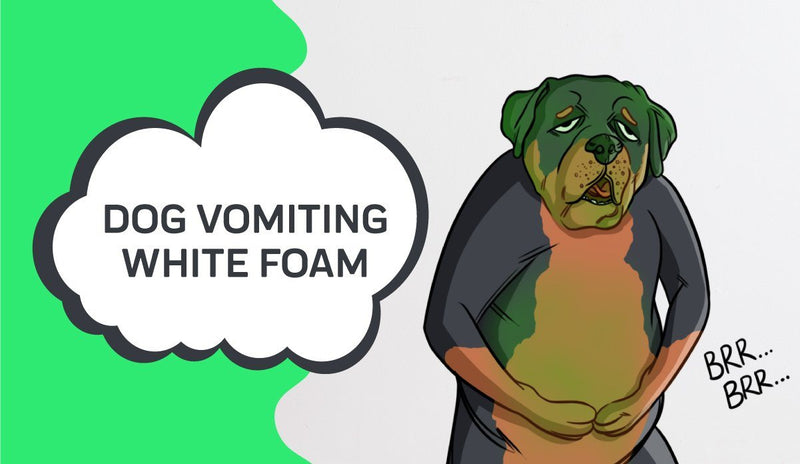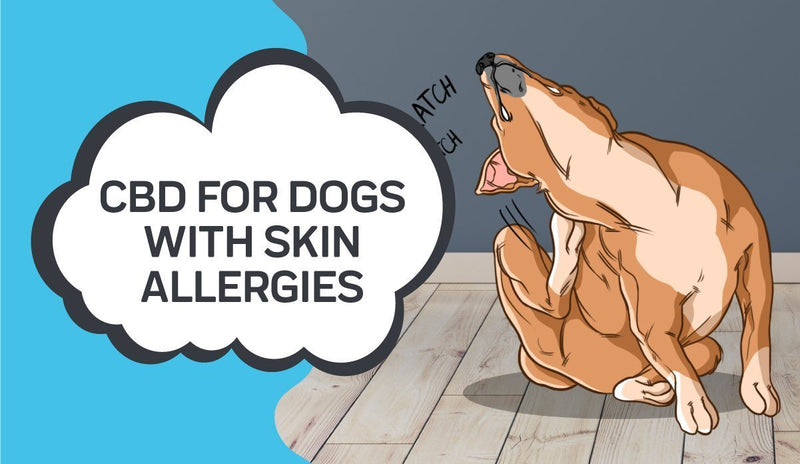
Let’s say you are at the neighbor's house, having coffee and discussing the new park the city is building.
Your friend’s dog bounds happily into the room, jumping up on a chair next to you and settling in for a long snuggle session.
It is super sweet that he loves you so much, you think. You wish you could have a dog too.
Then you sneeze. You notice your chest aches a little afterward. Your eyes are blurry and watery. You sneeze again.
Soon you are in the throes of a full-on allergic response.
Is this because of the dog? It could be.
If you are experiencing allergies to a current pet, or want to get a dog of your own but are worried about the constant sneezing and wheezing, there is good news.
Some dog breeds are being studied for their ability to create less of an allergic response than others. They are called hypoallergenic.
What Are Allergies? What Are The Signs Of Allergies To Dogs?
An allergy is an over exaggerated immune system response. Your body comes into contact with something that is a perceived threat, or allergen, and launches a full-scale war against it.
Your body quickly makes antibodies (like immunoglobulin E, or IgE) that sends a message to the cells affected. This message encourages those cells, usually located in your nose, eyes, skin, and lungs and called mast cells, to start releasing a chemical known as histamine.
This causes immediate inflammation in your body and forces those cells to secrete mucus with a single goal: eradicate the allergen, save your life.
… even if the allergen was essentially harmless and your life was not actually in danger.
Unfortunately, you can become more and more sensitive to the allergen each time you come in contact with it. You may have no allergic reaction the first time, or the second, but the fourth time you immediately may go into full anaphylaxis.
Anaphylaxis is the result of your body becoming hypersensitive to an allergen. It is a severe, life-threatening reaction.
Seek emergency medical treatment immediately if you or someone around you experience:
- Swollen or itchy lips, tongue, or throat
- Weak, rapid pulse or low blood pressure (which often presents as fainting or dizziness)
- Confusion or loss of coordination
- Inability to catch your breath while coughing or wheezing
- Pale or blue-tinted skin, especially around the face, throat, or chest
- A sense of impending doom or dread for no obvious reason
Emergency medical personnel will administer epinephrine, two doses approximately twenty minutes apart, en route to the hospital.
Luckily anaphylaxis is a relatively rare response to an allergen. Around 30 percent of adults and 40 percent of kids have allergies and most are not life-threatening.
The symptoms of allergies are easily identified because allergies are so common. They include:
- Itchy, red, watery eyes
- Sneezing and coughing
- Hives and skin rashes (called contact dermatitis)
- Trouble breathing, feeling of tightness in the chest and throat
- Stomach issues, like nausea and vomiting
- Swelling (called edema) especially at the site of contact
You can also develop allergic asthma, which means your airways tighten dangerously and make it difficult to breathe. A cough that sounds like a barking seal, hoarse wheezing, and the inability to take anything but very fast shallow breaths are all potentially signs of an asthma attack and need immediate medical attention.
Some allergic responses take just seconds or minutes to see. Others, like with poison ivy, may take days to show up.
There are countless substances in nature and in our homes that cause allergic reactions in both humans and animals, like:
- Animal dander (dead skin cells)
- Medicines
- Food like peanuts and milk
- Mold spores
- Plants and pollens (hay fever, for instance, can be caused by ragweed)
- Insect bites and stings
- Dust mites
It is not easy to avoid all the potential allergens.
Some, like food and medicine, are only allergens if ingested. Some cause an immune response on contact or upon inhalation. Sometimes your body only reacts after being exposed to an allergen for a long period of time.
Some allergies are merely a nuisance. Environmental allergies are so common that people joke about “sneeze season”.
Some allergic reactions are so dangerous that people must carry injectable epinephrine to keep themselves alive should they come in contact with their allergen.
If you have minor allergies, there are several over the counter medicines that can help alleviate the symptoms. Ask your doctor for suggestions.
Your allergies may even eventually go away on their own.
Allergies are not static; they change as time goes on. Many people find that with repeated exposure to animals their immune system realizes the dander is not a threat anymore.
What Does Hypoallergenic Mean? Can Dogs Be Hypoallergenic?
Hypoallergenic does not mean non-allergic.
Science has not confirmed the theory that some dogs are hypoallergenic, only that some animals appear to present less of a problem to some allergy sufferers.
Any given person can be allergic to one breed of dog but not another for no apparent reason.
You may think it is just the dog hair making your eyes swell up and your nose run. In fact, humans react negatively to the proteins in the dog’s hair, dander, saliva, and urine. When your dog grooms himself, these proteins are scattered around your living space, causing your immune system to go into overdrive.
You may also be allergic to pollen and dust held in your dog’s shaggy coat! Many people have suspected they are allergic to their fuzzy dog when in fact they are allergic to the dust mites clinging to their fur!
A dog can be hypoallergenic. Hypoallergenic means less likely to cause an allergic response.
There are some dog breeds specifically labeled ‘hypoallergenic’. It comes down to how compatible you and your dog are and how severe your allergies are.
Which Dog Breeds Are Hypoallergenic?

There are dozens of breeds of dogs that are considered hypoallergenic!
Terriers are very commonly described as a hypoallergenic dog.
Terriers were originally bred to relentlessly chase down vermin, like rats, and they are sturdy and fearless and feisty. They often gain a reputation for being aggressive, stubborn, and troublesome.
They have a lot of energy and need constant outlets for it or they will become destructive and highly vocal.
They tend to have short, wiry coats that hold on to lose hair and dander. They shed much less than other breeds, but also need a special type of grooming called “stripping”.
Stripping means literally pulling out your terrier’s fur at the root so new hair can grow in its place.
Some specific types of terrier to check into:
- Bedlington terrier
- Kerry blue terrier
- Wire fox terrier
- Yorkshire terrier
- Tibetan terrier
- Maltese terrier
- West Highland white terrier
- Scottish terrier
- Cairn terrier
- Australian silky terrier
- Airedale terrier
Other examples of hypoallergenic dogs are:
- Affenpinscher. This breed is actually a terrier-like toy Pinscher. They are intelligent, playful, and curious, and make good family pets.
- Basenji were originally bred as hunting hounds in Africa and they are often described as aloof and cat-like.
- Bichon Frise. These dogs look like fluffy stuffed animals, but have tightly coiled coat hairs that hold dander inside the corkscrew shape.
- Chinese crested dogs are smart, happy, and affectionate. Be advised that these dogs need intense grooming regimens despite some being completely hairless!
- The Havanese is the national dog of Cuba! They have a soft double coat but do not shed much so are considered hypoallergenic.
- The Irish Water spaniel is one of the oldest and largest breeds of spaniel. They are easy to train and devoted to their families. They shed very little.
- Poodles are exceptional jumpers that are intelligent and easy to train. Despite appearing fluffy, a poodles coat can be made of either course, wiry curls or long corded locks. They do not shed much and are generally a safe bet for those with allergies.
- Portuguese Water Dogs are cousins to poodles and can be impetuous troublemakers, but they are also brave and loyal. They have a coat similar to poodles, too, in that their coats are short and tightly curled and do not shed. Interestingly, they have webbed toes making them spectacular swimmers.
- Puli dogs appear to have dreadlocked coats. Their hair grows in long cords that create a rag mop look. They are small but fast and powerful and were bred to herd sheep. These dogs are similar to Komondors, which are NOT hypoallergenic.
- Schnauzers have adorable little beards on their faces and are muscular and fearless. They may be aggressive to small children or smaller pets.
- Weighing in at only a few pounds when full grown, the Shih tzu is a clever, spunky little dog originating from Tibet. He gets along famously with other people and other animals which makes Shih Tzus a popular choice for families. These dogs do not shed much, but they require constant grooming to ensure their hair does not mat and cause pain and baldness.
- Labradoodles are a cross breed between Labrador retrievers and poodles. They are low shedding dogs. Smart, energetic, and friendly, they were bred as guide dogs and need a good deal of exercise and play time.
- The Lhasa apso also hails from the monasteries of Tibet, where they would alert the Buddhist monks to any intruders or dangers. Their coat grows extremely slowly, which means they do not shed as often as other breeds. They are independent, sturdy, and easy to train.
- Samoyeds are large white dogs that were bred as reindeer herders for nomadic tribes in Siberia. They are fluffy and furry but low-shedding. They make great family dogs and hunting companions.
- Italian greyhounds are small and fast. They are mischievous and playful. Graceful and agile, with long lean legs, Italian greyhounds are spectacular runners. They have short, satiny coats that require only minimal upkeep.
- You would never look at an Afghan hound and think they are hypoallergenic. All that hair has to be an issue, right? They are! Unlike other breeds with long hair, their coat is only a single layer. It grows very much like human hair and needs regular grooming, but they shed very little.
There are also several super-allergenic breeds to avoid when choosing a pet.
- Saint Bernards are known for the amount of drool they produce. Saliva contains the same proteins that dander and hair do- the protein that makes people allergic to them. Bulldogs are prone to being extra drooly too, so avoid both breeds.
- German shepherds often have very dry skin that can flake and fall everywhere. Dander is a problem for allergy sufferers.
- Small dogs that are very difficult to housetrain, like Pekingese, are not a good option for those allergic to animals. Urine contains the same protein, but more concentrated than in dander and hair.
- Basset hounds and boxers produce more dander than any other breed.
- Avoid most cold-climate working dogs like Akitas, Siberian huskies, and malamutes. They have a double coat and shed the bottom layer twice a year, releasing allergens into the air.
How To Minimize An Allergic Response To Your Dog

If you have a dog you are allergic to, or want to get a dog and worry about allergies, there are ways to alleviate the contact you have with pet hair and dander!
First, make sure your bedroom stays a pet-free zone. Keep the door closed, clean your bedding regularly, and vacuum thoroughly to eliminate floating dog hair in your sleeping space.
Keep the animals off the furniture. Dog hair and dander can be hard to get off upholstery. It embeds itself in tiny spaces inside the fabric. Any time you sit down on your sofa, for instance, allergens will be hovering in your face, getting into your eyes and nose.
Vacuuming the furniture very well and using upholstery cleaners specifically for allergy sufferers can help make sure dander and dog hair do not linger.
HEPA stands for High Efficiency Particulate Arrestance. It is a super fine mesh filter that captures tiny particles of allergens (like pet hair and dander, tobacco smoke, and dust mites) before they are released into the air around you.
Make sure to install HEPA filters on your furnace. Use a vacuum with a HEPA filter. There are even room-sized machines that can eliminate floating allergens around you.
Wash your dogs toys and bedding in hot water weekly. Try using an enzyme-based cleaner that removes allergens. Also try setting your machine to run an extra rinse cycle.
Limit your contact with your dog. This is easier said than done, of course, but cuddles and hugs and rough housing can all cause a flare up in your allergies.
Try and leave the grooming to someone else in your household, or pay for professional grooming. Washing and brushing your dog will release all the trapped stray hair and dander, causing an allergic response.
Some groomers can even use products that minimize the dander buildup, so make sure to ask about your options.
Consult with an allergist immediately if you experience a bad reaction to your dog. While he may recommend that you rehome your dog, he may also have some other suggestions that could help you live with your allergies.
Medications that may help eliminate the reaction include:
- Over-the-counter antihistamines, such as diphenhydramine, work to reduce the effect of the histamines your body produces
- Eye drops, available over the counter or by prescription, can eliminate the itchiness and redness
- Oral allergy pills like cetirizine, fexofenadine, and loratadine
- Corticosteroids like prednisone can discourage your immune system from reacting at all (but also carry significant risks from side effects)
- Decongestants like pseudoephedrine and phenylephrine clear the nasal passages and help you breathe
- Nasal sprays (fluticasone propionate)
- Bronchodilators (albuterol or ipratropium) open up your airways to allow your chest to loosen
- Immunotherapy (in-office allergy shots) involves small shots of the allergen objected into your body, giving it the ability to build up immunity and tolerance to that substance
It may take several trial runs with different medications at different doses to find one that works for you. Also try combinations of medicines, such as a nasal spray, an eye drop solution, and an antihistamine.
Check with your doctor and your veterinarian before using any medications or special grooming products.
It might also help to keep a journal of what medicine you took, how long it took to take effect, and if your symptoms were lessened. Also note any side effects.
Choosing the right kind of breed can minimize your exposure to potential allergens, but keep in mind there is no such thing as a truly non-allergic dog.
If you want to go buy or adopt a new pet, a list of hypoallergenic breeds can be a good guideline, but be sure to spend time around several different types of dogs to find the one best suited for your allergies.
If you are allergic to a dog you currently live with, mitigating the damage done by the proteins in their skin, hair, saliva, and urine (with medications and cleaning regimen adjustments) may be the only way to spend time with them.
Keep trying to find what works for you and your household!
Sources:
Hypoallergenic DogsWhat Are The Best Hypoallergenic Dogs For People With Allergies?
57 Hypoallergenic Dog Breeds
The 20 Best Hypoallergenic Dog Breeds for Those with Sensitivities
Hypoallergenic Dogs










